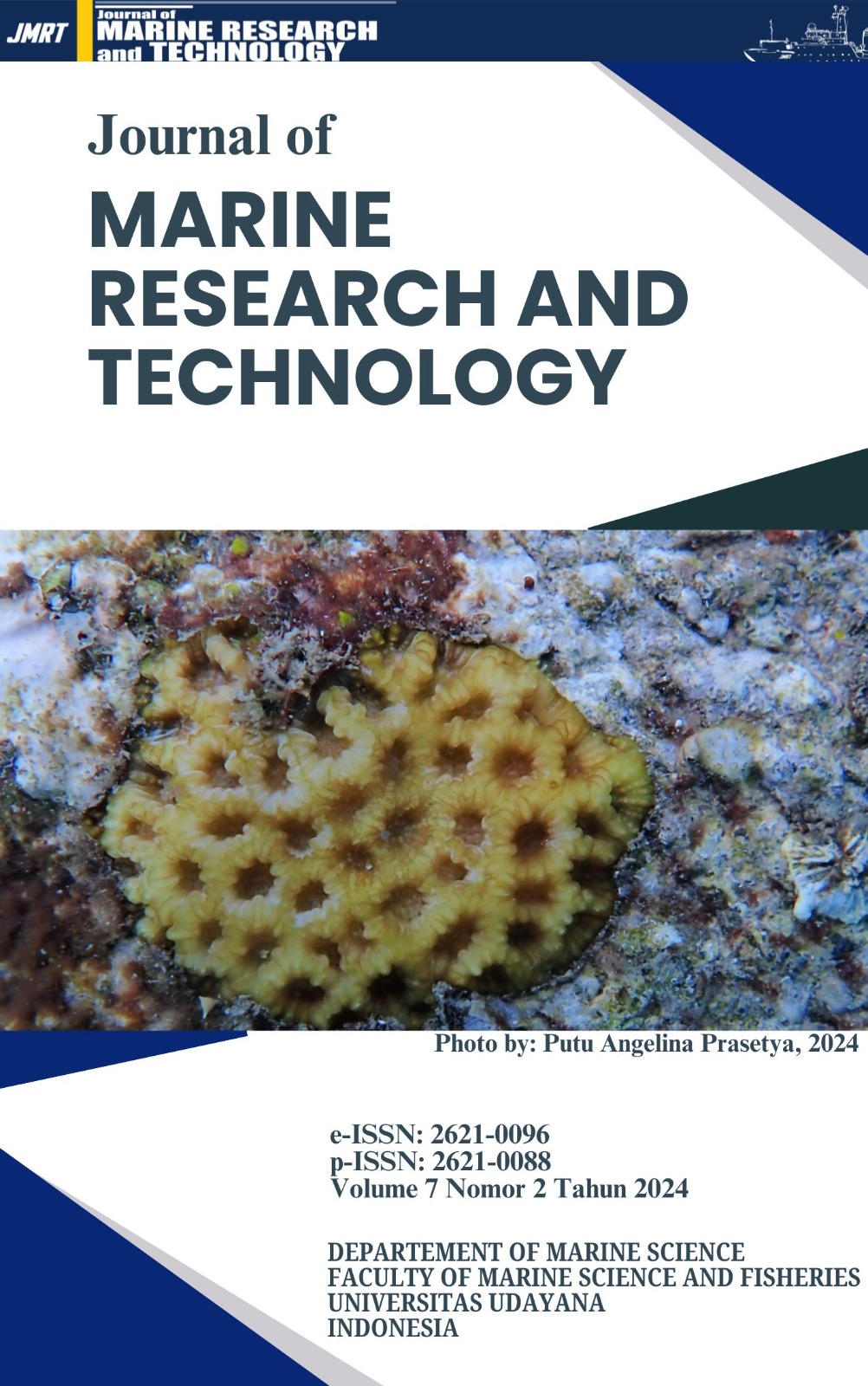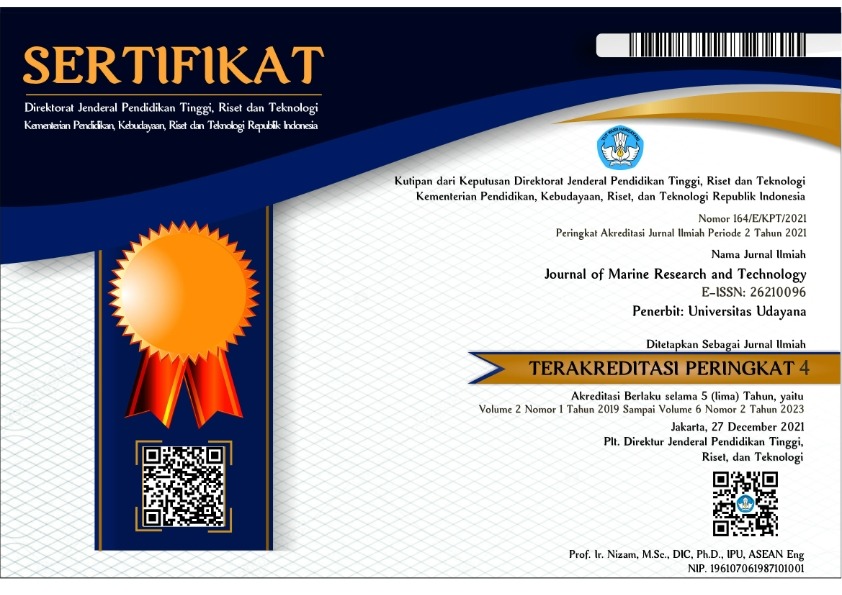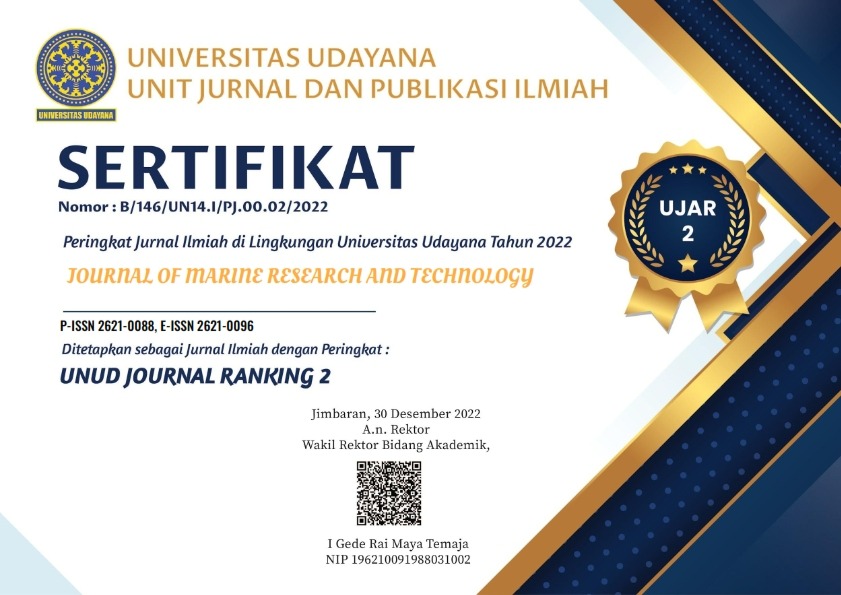Densitas, Habitat, dan Pola Sebaran Bulu Babi (Echinoidea) pada Daerah Pasang Surut di Pantai Manyar, Desa Ketewel, Kabupaten Gianyar, Bali
Sea urchins Density; Habitat; Distribution Pattern
Abstract
Sea urchins have an important role in the food chain in the intertidal zone. This study aims to determine the density, habitat characteristics, and distribution patterns of sea urchins in the intertidal zone ecosystem of Manyar Beach. The method used is a descriptive survey method. Data was collected in August 2023 at the lowest tide, including water quality collection. The results recorded three species of sea urchins found, with densities of each species: Echinometra mathaei 4.51 idv/m², Stomopneustes variolaris 3.51 idv/m², and Echinometra vanbrunti 0.23 idv/m². The habitat used by E. mathaei was 34% dominant in corals, 30% algae, 26% rocks, and 4% sand; S. variolaris was dominant in algae with a percentage of 41%, 26% rocks, 22% corals, and 4% sand, while E. vanbrunti 34% dominant in rocks, algae 25%, corals 21%, and sand 13%. The sea urchin distribution pattern on Manyar Beach showed a clustered pattern, which indicates that sea urchins tend to cluster and seek suitable environmental conditions as they need.
Downloads
Copyright Notice
The copyright to this article is transferred to Journal of Marine Research and Technology (JMRT). The copyright transfer covers the exclusive right and license to reproduce, publish, distribute and archive the article in all forms and media of expression now known or developed in the future, including reprints, translations, photographic reproductions, microform, electronic form (offline, online) or any other reproductions of similar nature.






